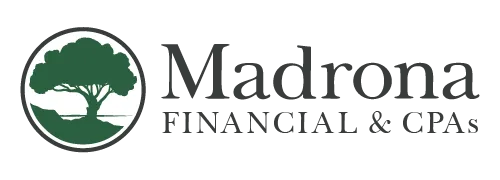You've worked hard to get where you are...
Are you leaving money on the table because of what you didn't know?
Discover comprehensive financial and tax solutions from a team of professionals that may be able to help you get more out of your hard-earned money.
As Seen On

The Right Questions To The Right People
Instead of looking for a "jack of all trades," consider working with a team of specialized financial and tax professionals.

Planning and Investment Services
Our advisors work with our CPAs as they help you create a comprehensive plan and custom portfolio.

Tax, Accounting, and Bookkeeping Services
Our CPAs work with our advisors so you can be more proactive with your taxes and accounting strategies.
Many People Want More Planning and Strategy from Their Tax and Financial Professionals
It's not necessarily about how much you have. It's about what you do with what you have.

DOES THIS SOUND FAMILIAR?
“I’m not sure when or how I can retire comfortably.”
"My CPA only files my return, even though I ask for more."
“I’m stuck because I don’t want to pay the big tax bill.”
"My CPA and advisor contradict each other."
“The market makes me uncomfortable.”
“I don’t know the right questions to ask.”
“My spouse says we’re fine, but I’m still unsure.”
“I’m just going to work as long as I can…”
“I don’t know where to start…”
If you answered yes to any of these statements, then Madrona may be right for you. Get more from a team of financial and tax professionals who may be able to help you get more out of your money.
Click “Let's Talk” for a conversational wealth analysis that can show you what you might be missing and what you could do instead to potentially get more out of your hard-earned money.
We believe it takes a team of tax, investment, and insurance professionals to help you get more.

Comprehensive Planning
Our team is trained to conduct comprehensive planning without the confusing jargon.

Strategic Collaboration
Our Advisors and CPAs work together to help you potentially get more out of your hard-earned money.

Fiduciary Responsibility
We hold our advisors and CPAs to the fiduciary standard and put your interest ahead of our own.
Click "Let's Talk" below to request a call and learn more about what comprehensive planning with strategy collaboration could do for you. The purpose of the call is to understand what you want so we can determine the best way to proceed, whether that means tax only services, investment only services, or a combination between the two.
“Wealth is the ability to fully experience life”
Henry David Thoreau
The Madrona Difference
Advisors + CPAs + EI = Peace Of Mind
We believe it takes a team of professionals to manage wealth properly. Instead of looking for a “jack of all trades”, consider a specialized team, trained in emotional intelligences, that works together in harmony as they plan and manage your wealth so you can enjoy the quality of life you’ve always wanted to enjoy.
Our Advisors
Our advisors are held to the fiduciary standard. That means they are legally bound to do what is in your best interest. Their primary focus is on you and what you want.
Our CPAs
Our CPAs are trained in proactive comprehensive tax planning. Once you become a client of Madrona Financial, you’ll be able to work with our CPAs as needed.
How To Get Started
Get your Madrona Wealth Plan in three easy steps
Step 1:
Let's Talk
Click the button “Let's Talk” so we can understand what you want, why you want it, and if it makes sense to proceed or not. It's OK if we are not a fit.
Step 2:
Conduct Analysis
Connect with a CPA or an advisor for a conversational analysis. The purpose is to review your current situation and to understand what could be done.
Step 3:
Determine How to Proceed
Once you complete the conversational analysis and understand your proactive options, we'll invite you to decide how you want to proceed.
7 Steps to a Successful Retirement
How to Confirm Your Retirement Is Designed to Support the Quality of Life You Want for 30+ Years
7 Essential Steps to Take Before You Retire
How to Prepare for a 30+ Year Retirement
Learn the Rules to Sustain Wealth
Think All You Need Is Income? Wrong!
How to Sustain Your Wealth, Even in a Crash
The Truth About Tax Planning
Discover What Lifestyle Planning Actually Is
All You Need Is a Good Portfolio, Right? WRONG!
Why Your Advisor May Not Be Enough
BONUS: Exclusive Access to the Growing You Wealth Newsletter


“Rooted In The 7 Areas That Sustain Wealth”
Everett Corporate Office
2911 Bond St Suite 200
Everett, WA 98201
Phone: 1 (844) MADRONA
Mountlake Terrace Office
6100 219th St SW, Suite 480
Mountlake Terrace, WA 98043
Phone: 1 (844) MADRONA
Park City Office
4554 N. Forestdale Dr. Unit 28
Park City, Utah 84098
Phone: 1 (844) MADRONA
Tacoma Office
1201 Pacific Avenue Suite 600
Tacoma, WA 98402
Phone: 1 (844) MADRONA
Bellevue Office
2050 112th Ave NE Suite 130
Bellevue, WA 98004
Phone: 1 (844) MADRONA
Cottonwood Heights Office
2825 E Cottonwood Pkwy Suite 500
Cottonwood Heights, UT 84121
Phone: 1 (844) MADRONA
